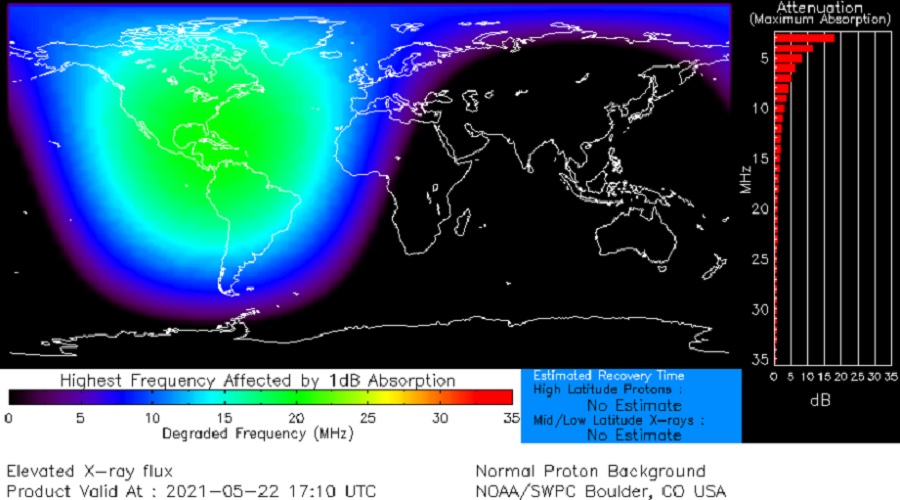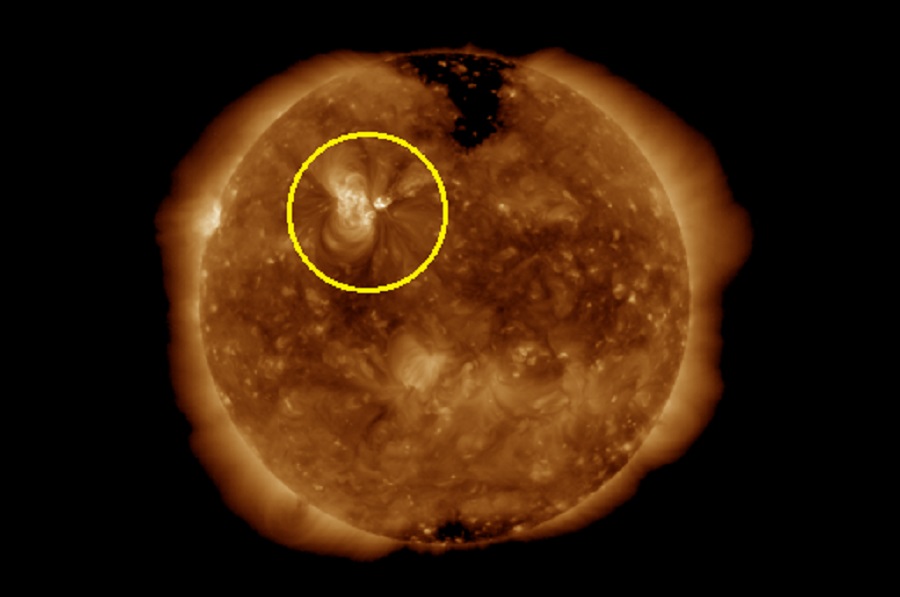
The Earth is being blasted by a solar flare today, and experts say this will impact radio communications and GPS systems, especially over North, Central, and South America. The magnitude 1.2 event is being rated as an R-1 “Minor” event by the National Weather Service’s Space Weather Prediction Center on a scale of 1-5.
An R-1 scale event can create weak or minor degradation of high frequency radio communications on the sunlit side of Earth, with occasional loss of radio contact. Low-frequency navigation signals can also become degraded for brief intervals, interfering with GPS navigation systems. NOAA developed a variety of space weather scales as a way to communicate to the general public the current and future space weather conditions and their possible effects on people and systems. The scales describe the environmental disturbances for three event types: geomagnetic storms, solar radiation storms, and radio blackouts. The scales have numbered levels, analogous to hurricanes, tornadoes, and earthquakes that convey severity. Today’s event is ranked on the radio blackout scale.

The moderately strong flare leaped off the Sun earlier today. A solar flare is a brief eruption of intense high-energy radiation from the sun’s surface; they will often cause electromagnetic disturbances on Earth.
Scientists with the National Weather Service’s Space Weather Prediction Center are monitoring the event. While typically known for their weather forecasts, the National Oceanic and Atmospheric Administration (NOAA) and its National Weather Service (NWS) is also responsible for “space weather.” While there are private companies and other agencies that monitor and forecast space weather, the official source for alerts and warnings of the space environment is the Space Weather Prediction Center (SWPC). The SWPC is located in Boulder, Colorado and is a service center of the NWS, which is part of NOAA. The Space Weather Prediction Center is also one of nine National Centers for Environmental Prediction (NCEP) as they monitor current space weather activity 24/7, 365 days a year.

Today’s event is one of many solar events that have recently impacted Earth. A geomagnetic storm impacted Earth on May 18 and 19, triggering stunning aurora over northern latitudes. That event was caused by a coronal hole on May 14. On May 12, one of the strongest geomagnetic storms to impact Earth in a while hit, forcing the Space Weather Prediction Center to issue a G3 – Strong- Geomagnetic Storm Warning. On May 2, a solar wind traveling at 1,118,468 mph struck Earth.